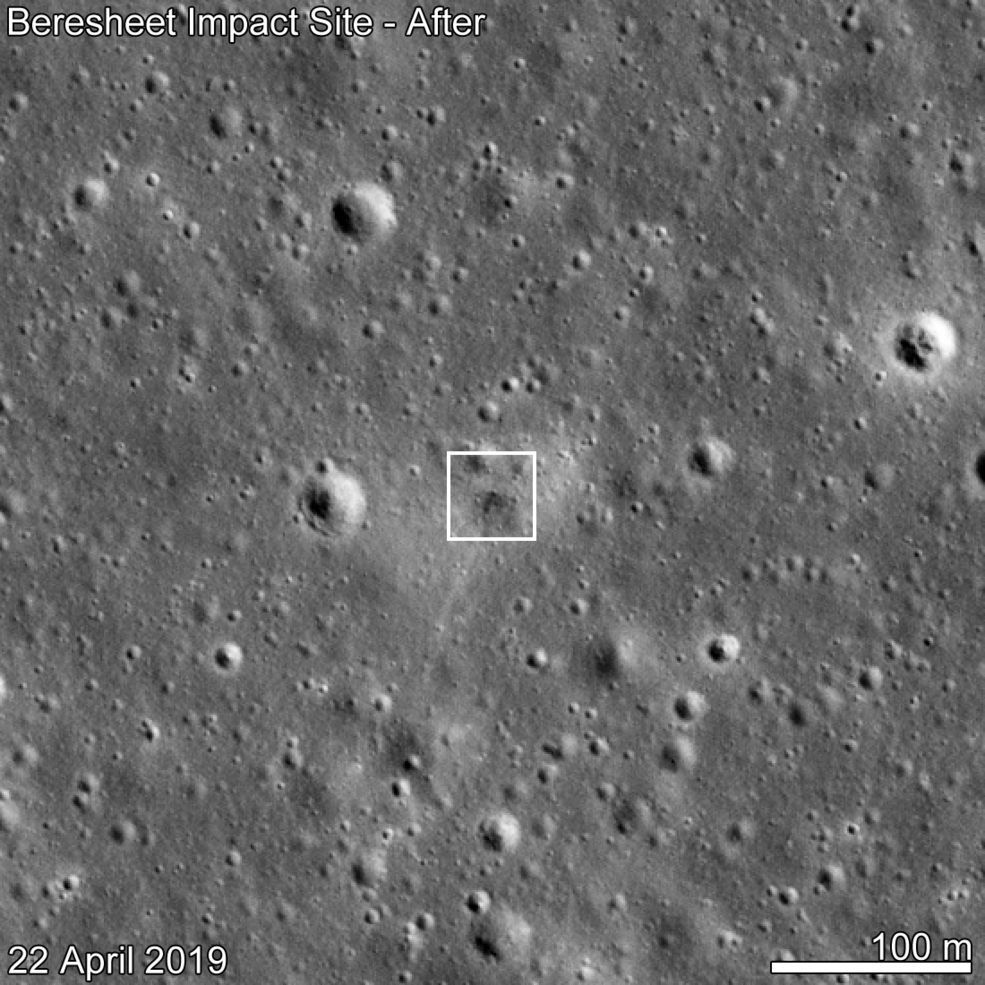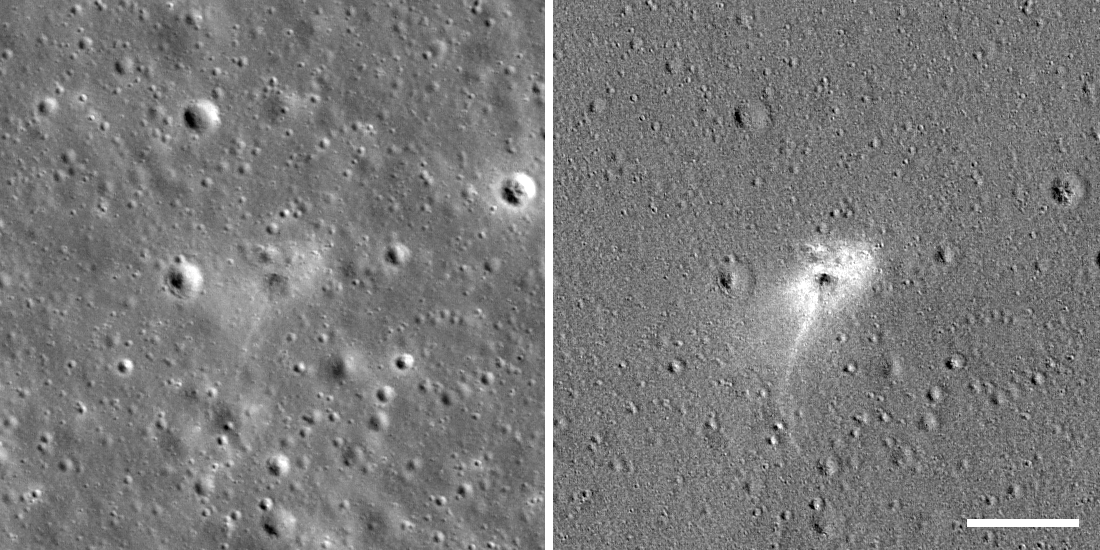Winston
Lorenzo von Matterhorn
- Joined
- Jan 31, 2009
- Messages
- 9,560
- Reaction score
- 1,749

Left normal, right enhanced:

May 15, 2019
Beresheet Impact Site Spotted
https://www.nasa.gov/feature/goddard/2019/lro-beresheet-impact-site-spotted
As soon as its orbit placed NASA’s Lunar Reconnaissance Orbiter (LRO) over the landing site on April 22, 2019, LRO imaged Beresheet’s impact site. The LRO Camera (LROC) consists of three imagers: a seven-color Wide Angle Camera (WAC) and two black-and-white Narrow Angle Cameras (NAC) mounted on the LRO, which has been studying the Moon from orbit for a decade. NAC captured the Beresheet impact photo.
LROC took this image from 56 miles (90 kilometers) above the surface. The cameras captured a dark smudge, about 10 meters wide, that indicates the point of impact. The dark tone suggests a surface roughened by the hard landing, which is less reflective than a clean, smooth surface.
From so far away, LROC could not detect whether Beresheet formed a surface crater upon impact. It’s possible the crater is just too small to show up in photos. Another possibility is that Beresheet formed a small indent instead of a crater, given its low angle of approach (around 8.4 degrees relative to the surface), light mass (compared to a dense meteoroid of the same size), and low velocity (again, relative to a meteoroid of the same size; Beresheet’s speed was still faster than most speeding bullets).
The light halo around the smudge could have formed from gas associated with the impact or from fine soil particles blown outward during Beresheet’s descent, which smoothed out the soil around the landing site, making it highly reflective.




